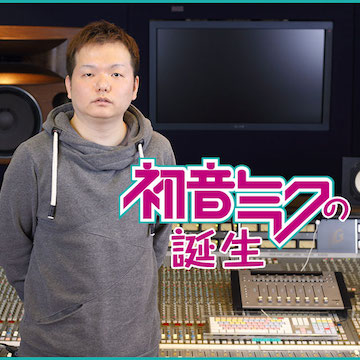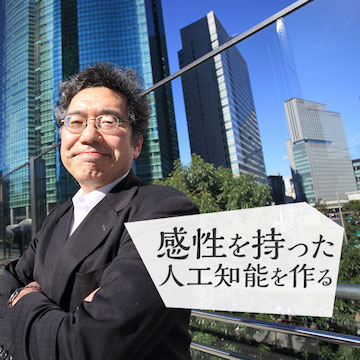Technology Tackles Human Powers
vol.3
What Is It to Be Human?
Ishiguro Hiroshi, Osaka prefecture
2017.07
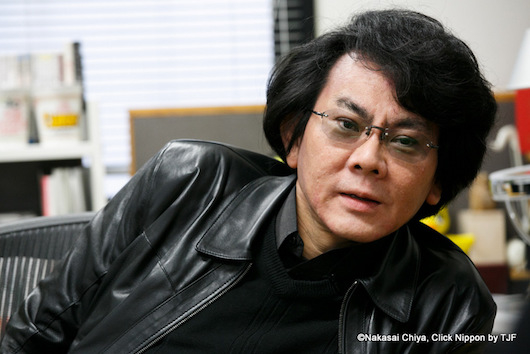
Creating androids of himself, cross-dressing television personality Matsuko Deluxe, and other models, Ishiguro Hiroshi has become a world-famous leader in robotics research. In February 2017, in collaboration with Dwango, which manages the Niconico video-sharing website, and the Parco company that operates fashion shopping buildings throughout the country, he launched the "Androidol 'U' Training Project." It aims to create a new kind of android that is capable of automatic dialogue and that can learn through dialogue with fans.
We asked Ishiguro about the turning points that led him to pursue the path of robots and about his thoughts on the question "What is it to be human?"
The Notion of "Human Feelings"
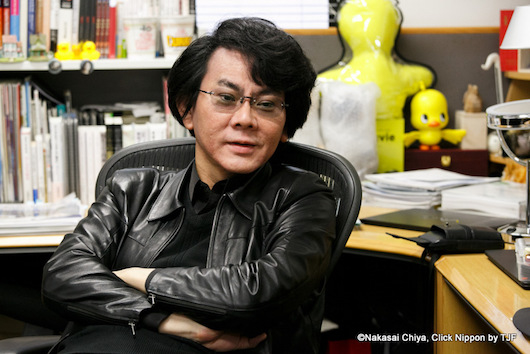
©Nakasai Chiya
My first turning point came in fifth grade, when I remember being told by an adult "think how other people feel." That made a big impression on me. I began thinking: What is a "person"? Adults make it sound like everybody already knows how, but it's actually quite difficult to consider how other people feel. Then it came as something of a shock when I realized that I didn't even really have a basic understanding of myself.
Until then, from the time I was in first or second grade, I was always drawing pictures--airplanes, flowers, landscapes--whatever struck my fancy. In third and fourth grade, our teacher advised us to write down our observations about things around us that caught our attention. Well, there was so much that caught my attention, and I wrote and wrote, filling enough notebooks to fill a large cardboard box. Third and fourth grade is just about the time in your life when you are going from the phase when everything in your head is images to the phase when your head starts to ring with words and language, and you feel the urge to "exteriorize" everything inside your head. If you don't, you start to feel sick somehow. I still feel this way. When I get an idea in my research, I have to get it out of my system before I start to feel horrible. I have whiteboards lining my room where I can get it all out and put it down in writing.
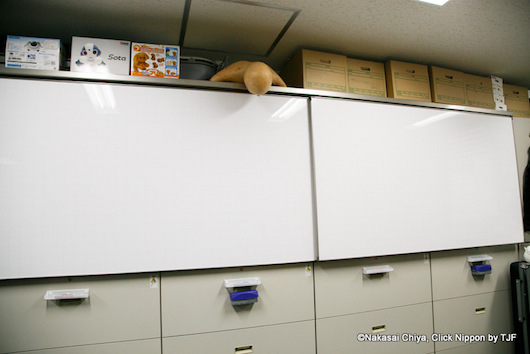
White boards covering one wall of Ishiguro's office.
©Nakasai Chiya
Dead Earnest Thinking
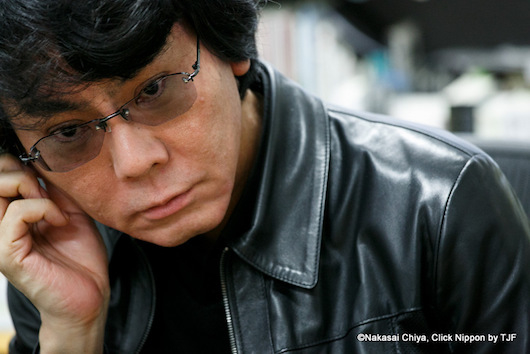
©Nakasai Chiya
My second turning point came when I was working on my Ph.D. My advisor told me to think about "basic problems," and so I put my mind to thinking of all sorts of possibilities for my research theme in dead earnest. If you study something that you want to give up on after only a little thought, you'll never break out of your own shell. But if you're in dead earnest, your survival instinct kicks in, and you wake up corners of your brain you never knew you had--you break through your own shell, your own limits.
It takes more than just an ordinary brain to come up with research ideas one after another. For me, it had to be a brain in which the left side and the right side were connected--in other words, where the artistic sphere and the scientific sphere, the realm of imagination and the realm of intellect, worked together. It took me about half a year of this kind of dead-earnest thinking, and then the two sides of my brain connected.
The people around me, too, are taking up big challenges of one sort or another. I often ask my students: Which has greater weight for you--the value of your own life or your research? And if you undertake research that is lighter weight than your own life, can you do anything to really change the world? I don't seriously think the world will change much as a result of my death. Bringing about change in the world is unimaginably huge. If you're only trying your best within the scope of your ordinary life, nothing is going to change in the world and you are not going to discover anything new. This is true for people who work in business as well. If you work for a company and you just do what your boss tells you to do, that's going to be the scope of your life. To change the world, if you want to do something new, you have to break out of your own shell.
Opening Up New Territory
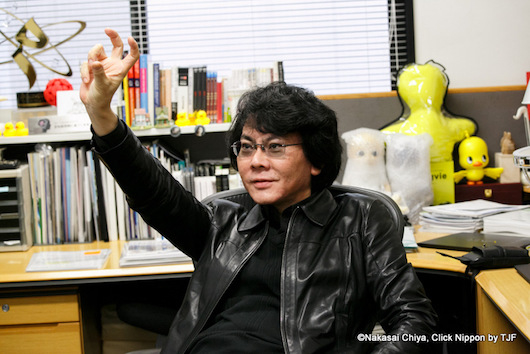
©Nakasai Chiya
Around 2000, I moved to Kyoto University, and my advisor said to me: Do research that will change the world. And that was my third turning point. The idea I came up with was to make a robot that could relate to human beings. So what I was doing kind of broke away from previous research, but at that point it began to roll even further away. If you want to make a robot to interact with human beings you have to know what a human being is. And then I began to make androids.
In those days, no one was making androids, but later our ranks began to steadily grow. I made the human-interacting robot together with associates in the United States. When new academic societies were created, articles we wrote that weren't accepted up to that time then began to be accepted.
And today, I'm ready to move on to the next thing, because I can see that the world is not going to change just by means of academic societies and scholarly papers. Of course, there are some, like Professor Yamanaka Shinya, who have succeeded in changing the world as a result of the papers they published, but communications and robots rest on complex technologies, so it is not a field that is really changed by publishing. Steve Jobs, for example, had authored few scholarly papers, but he really did change the world. Our research, too, concerns making things that spread in the world and change it.
I hope to delve down to the very basis of humanity, but it is not something that boils down to only one thing. I want to consider how, just as human beings are very complex, you could make something very complex that could have an influence on the world. So I've begun to conduct a lot of empirical experiments, create new systems working together with various companies, and try them out. I think I am closer to getting at the very root of humanity.
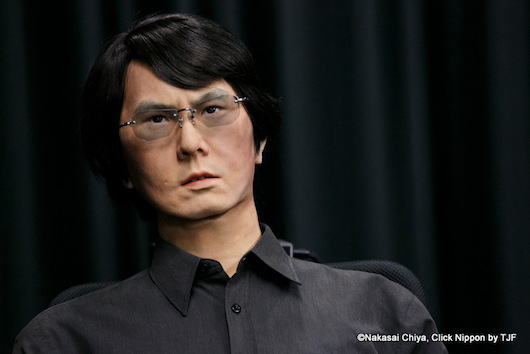
One of several androids Ishiguro has made in his own image.
©Nakasai Chiya
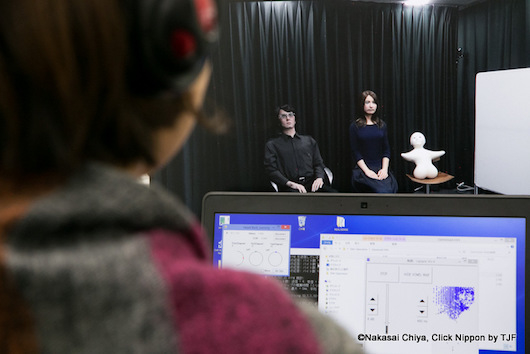
Manipulating androids by remote control.
©Nakasai Chiya
Definition of Human Being
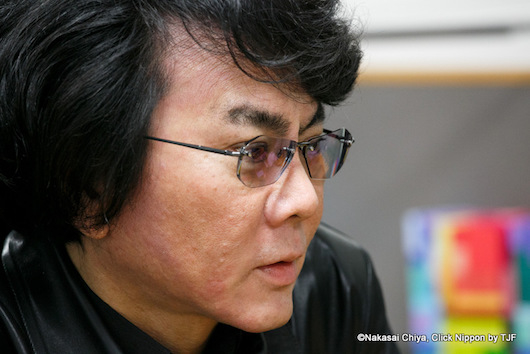
©Nakasai Chiya
What is the definition of a human being? At the very least we know we cannot just define it by the physical body alone. If we tried to do that, then we would be saying that people who lack arms and legs would be only 90 percent, or 80 or 60 percent human. And of course we don't say that. With continuing technological advancements--as with the building of prosthetic arms and legs--probably other parts of the body will eventually be replaceable with mechanical or other devices, but even if almost all a person's body parts were mechanical, we would still call him or her human, right?
So, we still don't have a proper definition of human. Would it be such a bad thing if our definition of human became a bit wider? I often wonder why our definition of human has to be so narrow. In any case, with advances in technology, that definition is in fact widening.
It seems to me that being "human" should be defined less by functions and the like. How about if we defined human according to importance in a web of human relations? There was once a time when people discriminated against people by the color of their skin, but at least most of us recognize that being human is not defined by the color of one's skin. That being so, surely the fact that the body is made up of mechanical parts shouldn't prevent us from using the term human either.
Society from Now On
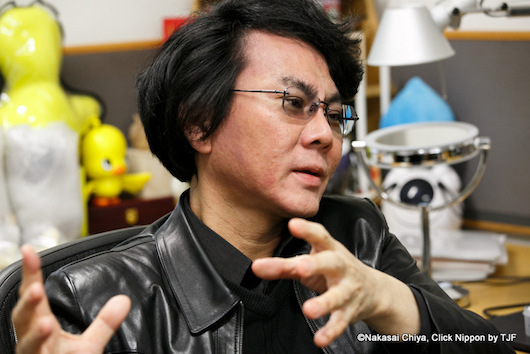
©Nakasai Chiya
Living together with robots may not be the "ideal" society, but I believe this is the only direction in which humankind will move. Robots will break down the boundaries of what we have always thought was "human." We can grasp this by thinking about the difference between apes and human beings. The difference comes down to the use of technology. Technology, essentially, is devices and machines--that is, "robots"! If we took all technology and robots away from human beings, what would they be? Just a species of apes. If we look around us, we can see that just about everything around us is manmade--artificial. You could go so far as to say that human beings are in the process of becoming robots. If human beings were trying to become more like animals, they would be getting rid of clothing, cameras and computers, and concrete buildings; they would be heading back to the forests. But what we're doing, year after year, is getting closer to being robots.
And these machines that interact with human beings will all come more or less in human form; this is because the human brain is what recognizes others as human. Anything that is in the shape of a human being the brain sees as human-like. Shape is important. We would find it much easier to talk to, say, this duck figurine, than to just an ordinary drinking glass, for example. This probably has something to do with the favorable sales of home appliances on the market today that "speak"--like the rice cooker that tells you "The rice will be ready in 5 minutes."
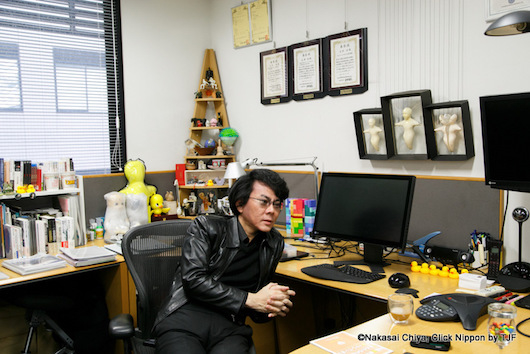
Ishiguro has a large collection of ducks in his office.
©Nakasai Chiya
Robots that Link People
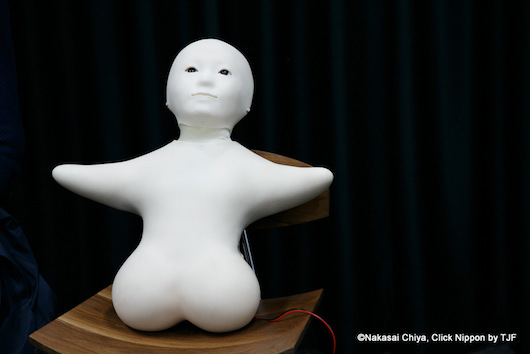
The Telenoid robot is ambiguous as to both gender and age.
©Nakasai Chiya
Our Telenoid robot developed in 2010 was equipped with the minimal features of human "appearance" and "movement" necessary in a robot. We aimed for a robot that people can interact with using their imagination. The "age" and "gender" of Telenoid depend on its user.
In the past five years or so, distinct from my previous work on Geminoid and Telenoid robots, I've been concentrating solely on developing robots for the purpose of connecting people to one another. The idea is technology that creates the feeling of being held by the hand even though no one is holding your hand. What we have developed so far is favored by some people, but we cannot introduce it to the general public until we can be sure that 70 or 80 percent of people will be positively impressed. I think it is only about 10-20 percent perfected. It hasn't quite achieved the principle of connecting people. I think I have an idea what is missing, but in any case, it doesn't work properly yet.
This may be similar to Twitter and Line. For example, with Line, members feel connected to one another just by becoming members of Line. But what I want to achieve is something that gives you a physical feeling of ease, like a child whose mother is firmly holding his hand. Or like the sensation of intimate connection between people who love each other.
When people interact with one another, what are the important features of the interaction? I am making androids to test my hypotheses about that question.
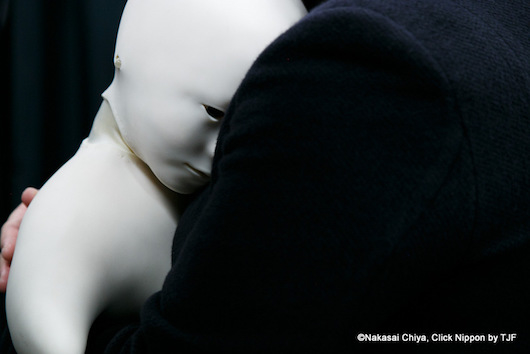
Telenoid changes gender and age depending on the person it interacts with.
©Nakasai Chiya
【Interview: February 2017】
Compilation: TJF










